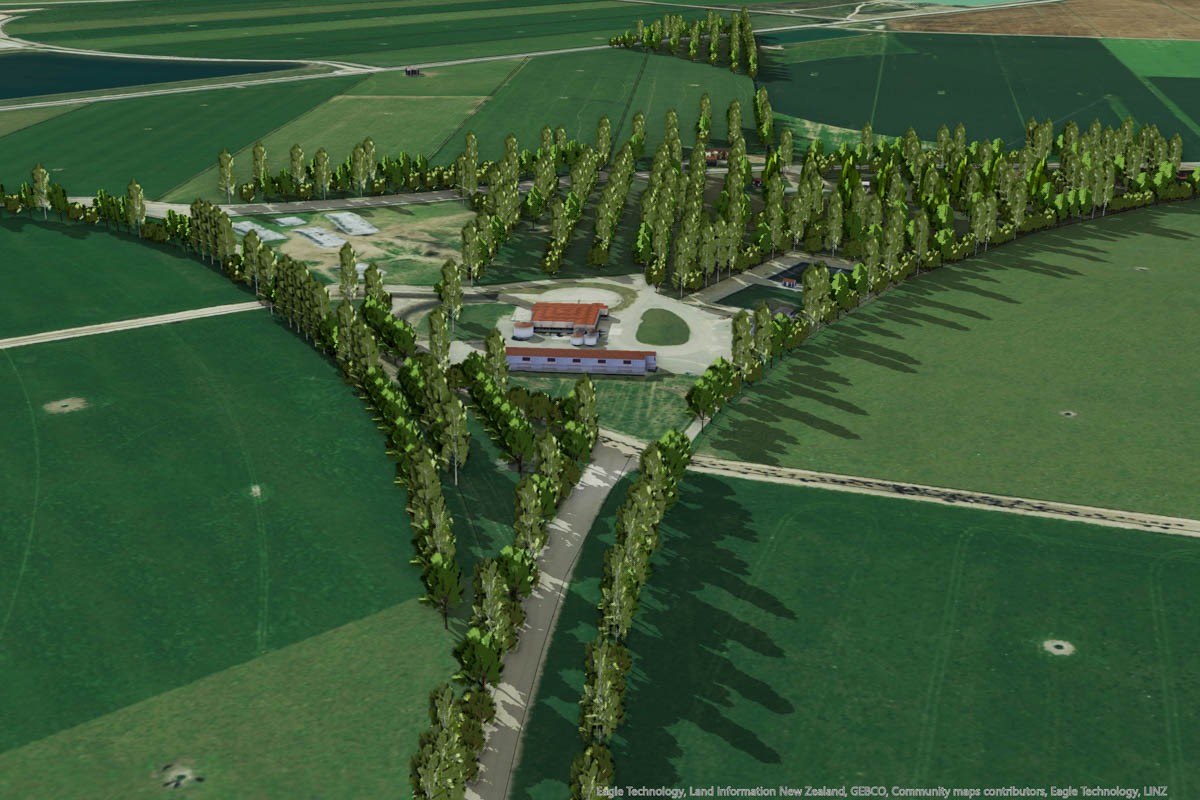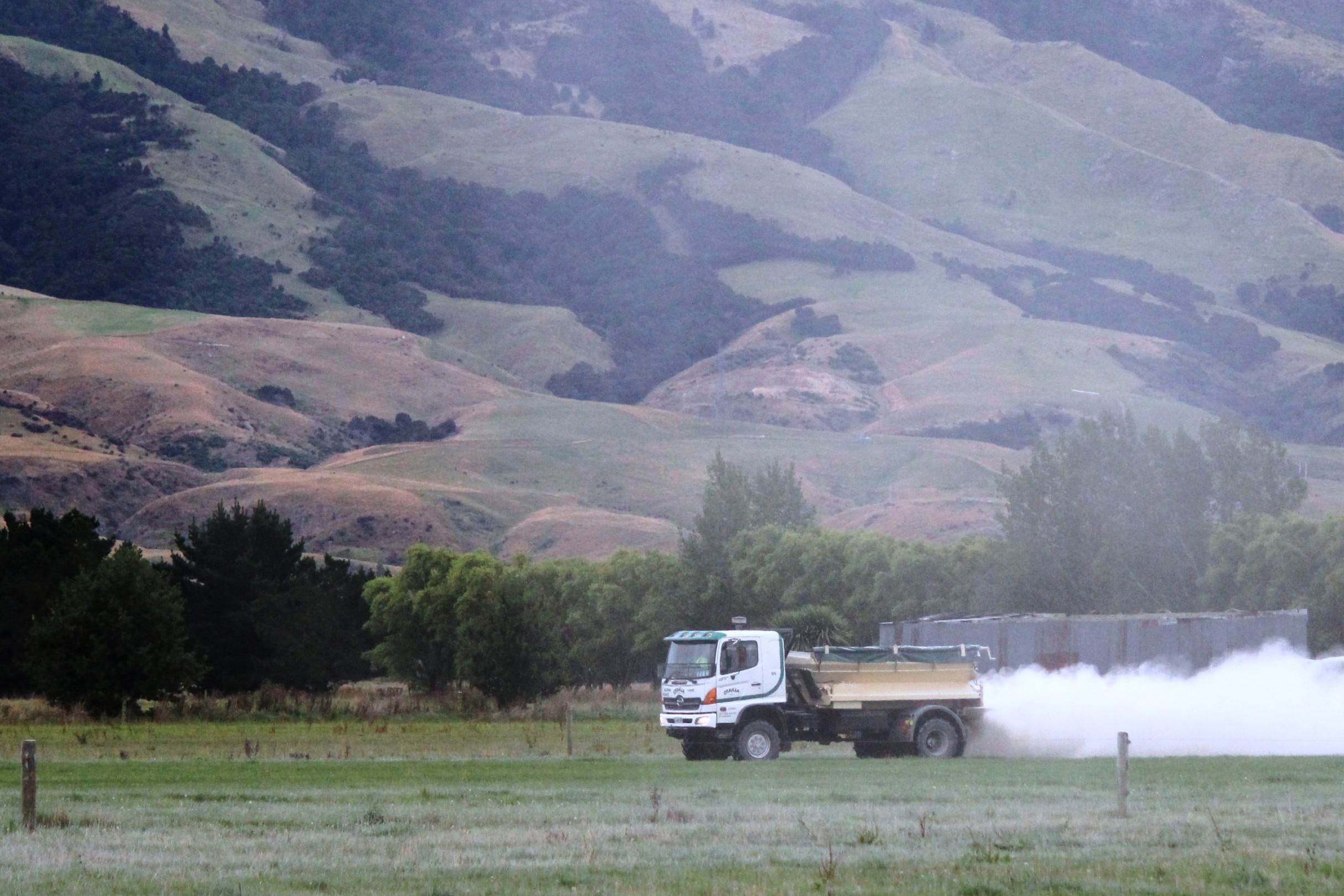Different strategies took Waikato farmers through a tough season. By Elaine Fisher.

and DairyNZ Senior Extension Partner Frank Portegys. Bottom
Michael Woodward and Anne-Marie Case-Miller.
The long summer dry which lasted into autumn saw Waikato dairy farmers Bart van de Ven and Michael Woodward change their normal farm management practices to protect the welfare of their cows and pastures.
Both outlined the slightly different strategies they adopted to successfully come through a very tough season during a SMASH (Smaller Milk and Supply Herds) webinar in July called ‘Getting a grip this spring’, hosted by Anne- Marie Case-Miller for SMASH and DairyNZ Senior Extension Partner Frank Portegys.
Bart and Vanessa are 50/50 sharemilkers milking 205 cows on a System 1 property at Springdale north of Morrinsville.
Michael and Susie Woodward own a 170-hectare dairy /dry stock farm near Otorohanga milking 320 cows once a day and they also run 300 Angora goats.
Bart said last autumn was tough and dry.
“In April we made the decision that we had waited long enough to find rain and it was not coming. Stress levels were high for us. So, we bit the bullet and dried off on April 6 instead of in May as usual.”
Eighty tonnes of palm kernel was brought in to feed the cows and weekly plate meter readings were taken to check on grass growth.
“Grass cover now is over 2300. It’s phenomenal. We have really grown grass in the last two months, in fact, grown it better than ever. There’s some truth in the saying that grass grows grass.
“In our second week of calving, we had calved half the cows and the cows were seemingly looking almost better than last year. I don’t know what impact the palm kernel has had or if it’s because of more quality grass with not so much dead matter.
“However, it’s been the toughest season we have ever had cow-wise, and mentally. We have gone through hell.”
It was the first time in 25 years that the farm Bart is sharemilking on had brought in feed. “It’s been a blessing. If we had not done it, I hate to think what the situation would be like now.
“My main concern was to get cows back into calf and to have low empty rates. The reason I got in all that feed was to be able to continue farming. We were running at a loss the last three months but at least we know the cows will get in calf again and we are back in the game.”
Michael (known as Woody) also brought in feed to get through the dry autumn and dried his cows off earlier than usual, basing that decision on grass cover and body condition.
“We used 30 tonnes of winter hay and straw in April to try to keep cows ticking through and not destroy paddocks. Through the winter, 70-day rounds were used to help keep the grass cover.
“We had the opportunity to buy 180 bales of feed early in May and had turned our nose up at it, but thankfully it was still available later and saved our bacon. We got through June and brought in another load of straw from Hawke’s Bay and 30 tonnes of ryegrass from Canterbury, not to put weight on but to keep the cows happy on the grass hay they were getting.”
Woody chooses not to feed palm kernel. In July his milking cows got 16kg of feed each day, 13 from the paddock and three through the shed. Dry cows were on 2kg of straw and 10kg of grass in July and heifers received some meal when they were put through the shed for training ahead of coming into milk, and 10kg of grass.
“We got through the season and are at break even point.”
In late July cover on the farm was at 2100 and “the quality is fantastic”. That result has been achieved by standing cows off.
“We stood cows off the pasture more this winter than in the last three years combined but is has paid dividends because the pasture grazed has come back faster,” Woody said. 
Only the heavier and mixed-age cows were stood off. The heifer mob was left on the paddocks. Woody doesn’t have a specific stand-off facility so used the milking yards when the rain was coming through. Depending on the weather the cows might be in the yard from 5pm at night to 8am the next day. Other times they would be there from 5am to 3pm. “Because of our ash soils and topography of rolling hills, the water disappears quickly so if the cows come off for a time they can get back on quickly.
“I hate standing cows off on concrete or on races but think if they have to go anywhere, clean concrete is better than races which can affect their feet and damage the race.”
By the end of July Woody was planning to apply 85kg/ha of ammo fertiliser to the whole farm by helicopter to help the farm “climb out sooner rather than later”.
Bart, who farms on sandy soils, stood his cows off on the concrete yards five times from June 1 to mid-July, usually between 3pm and 7am the next day.
“Some heifers and young stock were in the race, but we have got Jersey cows which are better at everything, and definitely when it comes to their feet. I think I had two lame cows last season and not one this season.”
Feed on Bart’s farm is worked out on a square metre basis with milkers offered 100sq m each on paddocks with 3000 cover plus 1kg of palm kernel. Every year Bart prints off the DairyNZ spring rotation planner.
“If I don’t have the planner, I cannot see far enough ahead of myself to make decisions. The planner is the best tool on the DairyNZ website. I’ve used it for 18 years. The one time I didn’t I got in the shit so went straight back to it. It works for me every single time.”
Occasionally Bart veers off the guide. “Sometimes it should be an 80-to-83-day round but that can drop to 70 days if required. It’s not stuck in concrete but by using it I have never had no grass.”
Frank said the spring rotation planner was a deceptively simple tool to stop farmers going too fast too early in spring, and to allow grass to regrow before putting cows back into paddocks. Woody also uses the planner but doesn’t stick to it ‘to the nth degree”.
“The planner gives a basic outline. However, who gets what area on the day depends on how much pasture is in the paddock, especially this year when paddocks have come back more inconsistently than in the past.”
Frank said the pressures of first the dry summer and then a wet winter could be demoralising, and he asked what Woody and Bart were doing to look after themselves and their staff. Bart and Vanessa, the sole staff on the farm, aim to make sure the basics are done, but also get plenty of rest. They take part in a regular Monday night catchup for farmers in the Springdale/Waihou area.
“We meet at different farms from 6.30pm to 7.30pm for a beer or two.” Bart and Vanessa have also bought a V8 and plan to go cruising in the summer.
Woody said reducing stress on himself and Susie was one of the focuses when they came north after farming in the South Island.
“From day dot we have been once-a-day milking for the full season to make sure we have time for the kids’ school events.
“We also sort out what jobs are non-negotiable each day. At the moment that’s milking the cows, organising the bobbies, feeding stock and getting the kids to school. Then for the rest of it – if it doesn’t get done, don’t stress and do it the next day.”
This year for the first time the couple have taken on a manager fulltime and are already seeing the benefits.
“It is a chance for us to give someone an opportunity in the industry and also enable us to keep doing what we do for years to come.”
Frank and Anne-Marie urged farmers feeling under stress to reach out to DairyNZ, SMASH or other support agencies and where possible, to get off farm for social and industry events.
“Also check on your neighbours to see how they are,” Anne-Marie said.
Key points
- Dry cows off earlier than usual
- Bring in extra feed
- Stand cows off paddocks in the wet
- Prioritise farm jobs
- Use the DairyNZ spring rotation planner
- Look after yourself
SMASH (Smaller Milk and Supply Herds) is run by a group of NZ dairy farmers with a passion for the industry and for helping to build a strong and sustainable future for dairy farming. www.smallerherds.co.nz
DairyNZ is the industry organisation that represents all NZ dairy farmers, supporting them through investing in research, resource development, extension, and advocacy to ensure they lead the world in sustainable dairy farming. www.dairynz.co.nz





